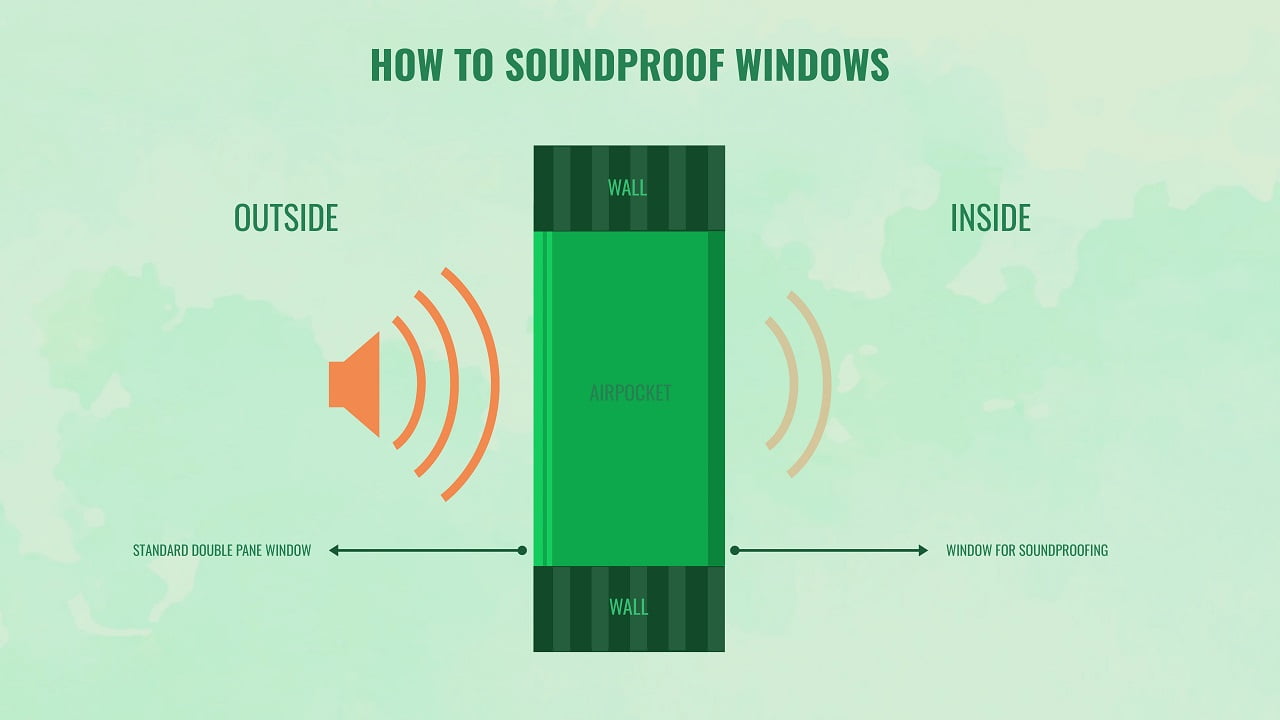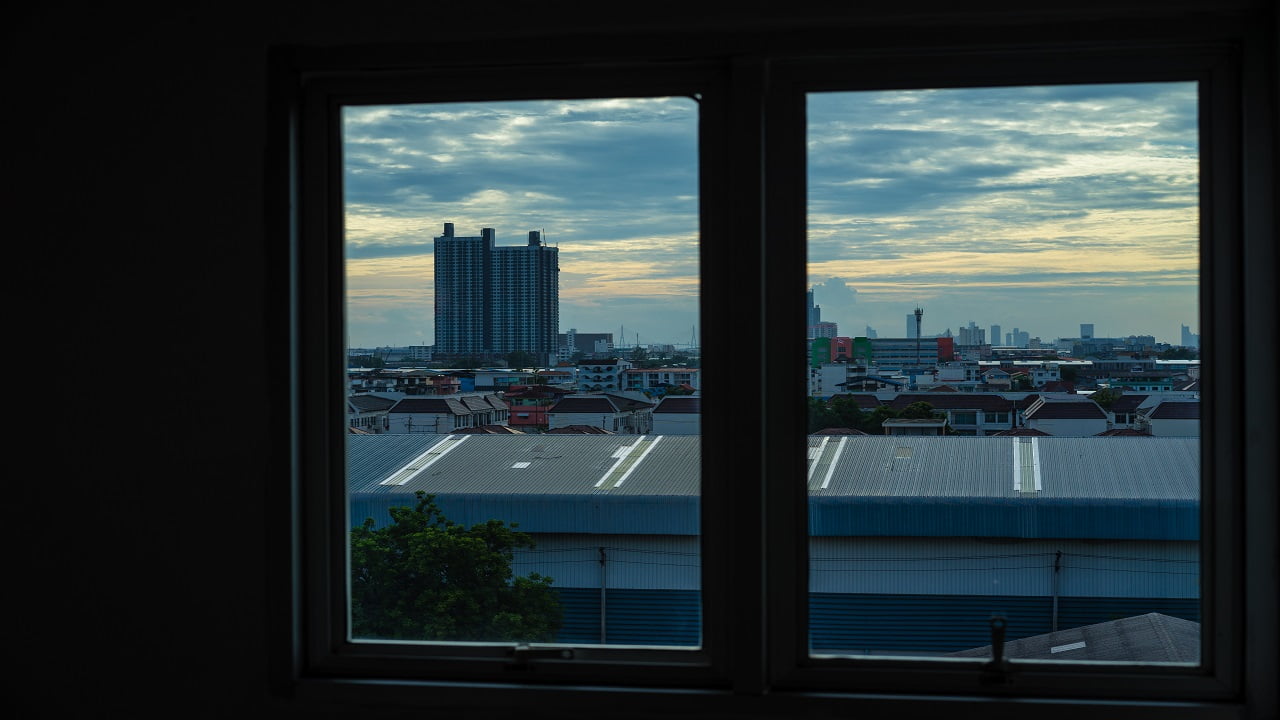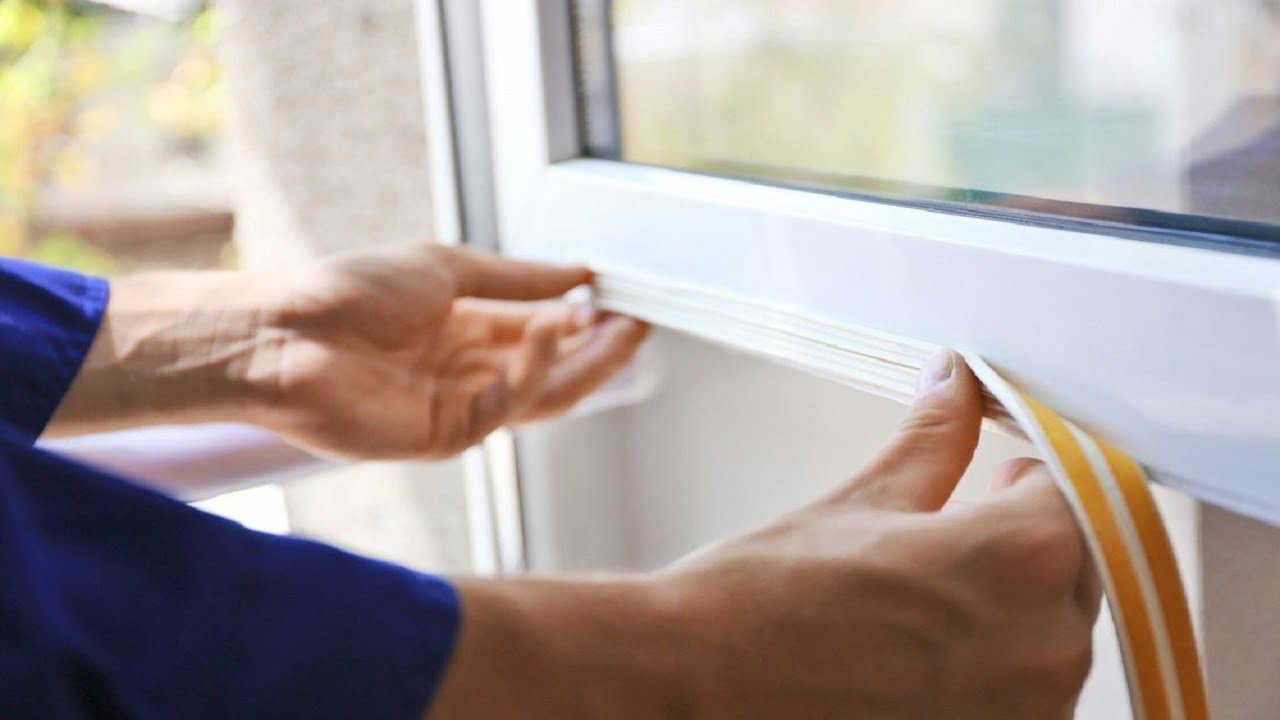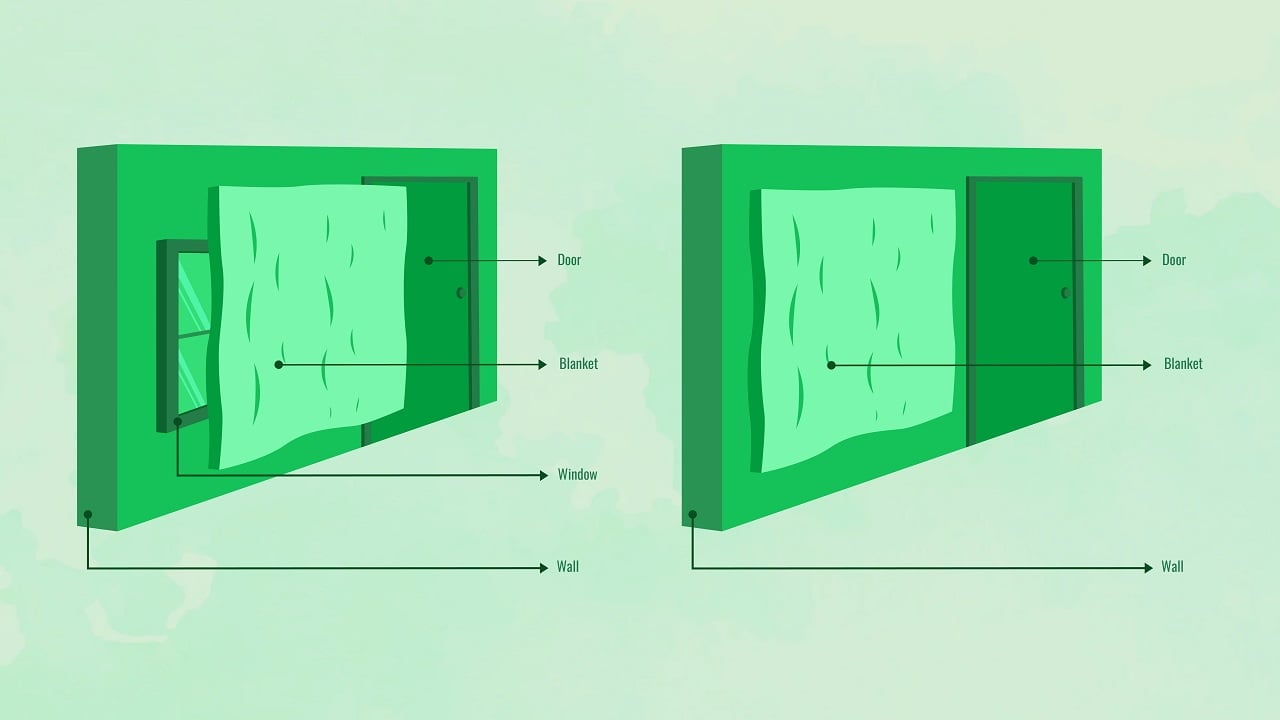 Reviewed by
Anton Giuroiu
Reviewed by
Anton Giuroiu
The best way to soundproof windows is by triple glazing, with different thickness of panes, and ensuring it’s completely sealed. Other inexpensive alternatives and DIY solutions include soundproof curtains, window plugs, or caulk seals, though the improvements they offer will be limited.

Living in healthy surroundings with birds chirping and other sounds of nature improves your mood, resulting in physical and mental well-being. Similarly, when you are bombarded by noise it leads to frequent mood swings and can affect your relationship with neighbors or loved ones.
To help you keep your cool, today’s guide highlights some easy window soundproofing methods. Use the method most relevant to your needs and enjoy greater peace of mind.
Why Should You Soundproof Windows?
Before I tell you how to soundproof windows, don’t you want to know why you should soundproof them in the first place? One of the important reasons for installing noise-reduction windows is they enhance cognitive function.
With greater insulation, your existing windows can block sound up to 90% to create a peaceful home or office space for improved productivity. But that’s not the only reason for using soundproof windows, and here are some other advantages.
1. Safety
Most people think twice before installing large glass windows, but soundproofing a window is safe, especially if you use a durable material like acoustic glass. Moreover, soundproof windows are usually made of laminated glass having multiple panes, like double pane windows.
2. Installation
You won’t need to replace the existing window to install window soundproofing because it acts as a second window behind the existing window frame. This proves cost-effective and helps avoid unnecessary expenditure during installation while cutting out outside noise.
3. Condensation
When you soundproof a window, it reduces condensation and keeps the interiors comfortable, which isn’t possible with regular single-pane windows. Sometimes with effective soundproofing, you can also enjoy zero moisture build-up that reduces the need for costly window treatments and maintains the window frame in top condition.
This is because most window soundproofing involves dual pane windows that create a sealed and insulated space between the glass.
4. Energy Efficient
Since soundproof windows act as an extra protective layer, they reduce the need for insulation and make the entire setup energy efficient. This further reduces exposure to UV rays and ensures it’s easier to maintain the internal temperature of most rooms.

Questions To Answer
When I decided to soundproof windows in my home, I came across several techniques with varying efficiency levels. I asked myself the following questions to ensure that soundproofing was done right and I would not have to spend more money on future repairs.
- Do I want to block constant noise or absorb sound only during certain times of the day?
- Is it a high-pitched or low-pitched sound?
- Is the problem persistent and serious enough to merit repairs?
- Is the noise unbearable at times?
If you can answer these 4 questions like me, choosing the most suitable method for soundproofing windows will become easier.
Soundproofing Windows In 13 Effective Ways

The first thing I tell people who want to know how to soundproof windows is they must have an idea about Standard Transmission Class. STC helps experts measure different acoustic surfaces and determine what sounds can be heard at a particular level.
If the STC value of a surface is high, its ability to reduce the impact of the sound waves is also high. So, to ensure you have chosen the best soundproofing windows, check the STC value so that the surface can absorb sound easily.
Single-pane windows usually have an STC rating between 18 and 20, which isn’t very high and allows unwanted noise to pass through. But after installing soundproof windows, the STC value will increase to reduce window noise more readily.
I have highlighted the STC value of some common sounds here -
- 25 - You can hear and understand soft speech
- 30 - You can hear and understand normal speech
- 35 - You can hear and understand loud speech
- 40 - You can hear loud speech but won’t be able to understand it
- 45 - The minimum requirement for having privacy
- 50 - You can hear loud sounds, but they are very faint
- 60+ - This is the required level for good soundproofing
Below I have listed some common techniques for soundproofing windows, and it would be best to layer these options for maximum noise absorption.
1. Acoustic Caulking/Sealants
Closing the windows, shutting the door, or drawing the window blinds can still lead to noise pollution when sound filters into the room through tiny gaps around window frames. Such gaps are most common at the point where the wall and window meet, so you can seal them with an acoustic caulk.
Compared to conventional products, acoustic caulk doesn’t shrink and is soft. So, clean the area around the window frames before filling the caulk gun and cutting the tip off the tube. Make sure to apply a steady bead of caulk around the sides of the window opening, let it settle, and clean the area with water and soap.

2. Window Foam
Window foam doesn’t cost a lot of money and improves the acoustics in a room. You can attach the foam to the windows to also reduce light pollution, especially in office buildings. The best part is that removing and replacing the foam is hassle-free and doesn’t require professional intervention.
But it won’t deliver the best results in a residential space, with the foam even reducing the attractiveness of your windows.
3. Window Inserts
When you don’t want to replace or repair the single-pane window, it would be best to use window inserts. This is an acoustic glass that homeowners can add over the glass panel, with some products even proving customizable.
Instead of installing an extra interior window, the inserts blend in and cover the single-pane windows to reduce the noise problem.
4. Storm Windows
If you don’t want to spend much money on soundproofing windows, go with storm windows that reduce the need to replace single-pane windows. A professional can conveniently install these windows outside to cover the existing window opening.
I recommend choosing a quality product made of acoustic glass instead of standard glass, while the glazing methods and soundproofing vary according to specific needs.
5. Double-Pane Windows
Popularly known as double-glazed windows, double-pane windows have two glass panes in each window with air space in between that’s filled with argon or dry air. The greatest benefit of double-paned windows is their energy efficiency, thanks to the insulated glazing, and you can choose from several thicknesses or glass types.
Although double-glazed windows cost more money than other soundproofing options, you will save more money in the long run, thanks to lower cooling or heating bills. In other words, the insulation offered by double glazing is unparalleled, provided the panels have 12-16mm space between them.
To give you an idea, the STC rating after double glazing is 41, while laminated glass has an STC value of 35. In both cases, soundproofing is higher than single-pane windows with an STC of 30.
Tip
To make the right choice, opt for double-glazed windows having dissimilar glass or a layer of laminated glass on the exterior. This guarantees greater protection against heavy noise pollution.
6. Window Plugs
This Do-It-Yourself technique isn’t a permanent solution, as it covers the entire window, but it certainly helps reduce noise. Window plugs are a type of sound barrier that fits within a window frame, and in most cases, you will need an acoustic mat, a thin board, and acoustic foam.
The shape of the foam should be similar to that of the window, following which you will have to attach it to the mat and thin board. Use an adhesive like spray glue to create a tight fit and fix a handle on the other side of the window plug for easy maneuverability.
7. Window Blind
A simple method most people ignore is using a window blind to lower sound transmission and drown out traffic noise. In fact, some high-quality honeycomb shades can absorb 70% of sound energy but even better is that you have several options to choose from.
This ensures you can amplify the interior décor without affecting the noise absorption capabilities. Choose a heavy textile fabric to minimize echoes and ensure thermal insulation or use them with a blackout curtain to enjoy the comfort of a quiet home.
8. Curtains To Block Noise
Another easy technique that guarantees maximum sound absorption is blackout curtains, especially since they serve multiple purposes. Most noise-blocking curtains reduce sound vibrations and help manage the internal temperature by preventing heat from escaping in winter.
You can also block sunlight and keep the room cool in summer, so make sure only to use a soundproof curtain having multiple layers. The detachable felt liner stops noise coming through the window, supported by extra panels that provide a better surface for absorption.

9. Self-Adhesive Foam
Weatherstripping or self-adhesive foam functions like acoustic caulk to block sound waves, but it’s not a permanent solution. In my opinion, you should use weatherstripping with caulk to enjoy maximum energy efficiency and lower noise pollution by covering the gaps around the window frames.
Use a high-quality product and apply the foam to the bottom of the sash window to quieten most of the outside noise. And when needed, you can remove the tape; however, be careful because sometimes it peels off a portion of the paint or frame timber.
10. Polyvinyl Chloride Sound Barrier
At times, for windows that are out of sight, you can opt for DIY window soundproofing that involves polyvinyl chloride. PVC is a heavy-duty material often used for construction purposes in homes and vehicles and is well-known for its characteristic “flow effect.”
As a result, you can use it to dampen impact sounds or anything that causes vibrations, such as a running engine. That’s why many people install PVC to soundproof the ceiling or floor, which helps block noise when there are loud neighbors in the vicinity.
Or hang it over the windows like a curtain and paint it to blend with the interior décor.
11. Fiberglass Panel
At times, the outside noise can be excessive, and you will have to opt for a denser and thicker product like quilter fiberglass to soundproof a window. But how thick am I talking? Fiberglass panels that are 8 feet tall, 4 feet wide, and 2 inches thick can weigh more than 12 pounds.
Thanks to the added weight, placing the panel flat against the window frame becomes easier when you hang it with hooks. This ensures no room, even at the top or bottom, for sound to pass through.
For further insulation and blocking, it would help to attach a Velcro seal to the exterior of the window. The only downside is it’s not very attractive, so place curtains over the fiberglass to retain the appearance of the room.
12. Carbon Absorption Panel
Carbon panels are a high-tech solution for noise reduction since they absorb low-frequency sounds. They are much like foam panels and go over the window to block light, but the quality of soundproofing is much better, owing to the quality of the material.
On the other hand, it’s one of the costlier options, so most people have second thoughts about it. But if you are sensitive to low rumbling sounds or live near a construction site, I suggest that you soundproof a window with a carbon panel for a permanent solution.
13. Acrylic Sheet
You can add acrylic sheets over the glass panel as an affordable soundproofing solution, but it’s not as effective as some of my other suggestions. This is because the air gap between the two panes is smaller, so the noise insulation isn’t as pronounced.
It would be best to use a thick sheet of plexiglass between ⅜ and ½ inch thick for optimal results. And when choosing a suitable product, you can opt for window-grade acrylic that won’t discolor or fade from sun exposure.
To ensure that the sheets fit properly over the windows, measure the inside of the frame before cutting the panels. You will also need an additional wood or metal frame to create a dead air space while ensuring that this frame is taller and wider than the windows.
Glue the frame and attach the sheets to cover the entire window. Sometimes, people also use magnets to remove the frame if they need to use the window.

Soundproofing Windows Conclusion
To be more productive at the office or enjoy a pleasant time at home after a tiring day, it’s essential to follow proper soundproofing practices.
Most people blame their walls and spend substantial resources soundproofing the drywall. However, walls only play a small part in allowing sound to enter a room, with the main culprit being the windows.
Since walls have multiple layers, including a wood exterior, drywall, and an air gap, they attenuate sound much better than people think. But a single-pane window with a thin glass panel doesn’t have high sound attenuation abilities, that’s further compounded by issues like cracks and holes.
After reading my guide, you can choose any soundproofing technique to relax in the comfort of a quiet home or combine multiple methods for a more permanent solution. So, take your pick and cut out the hustle and bustle of the outside world!
